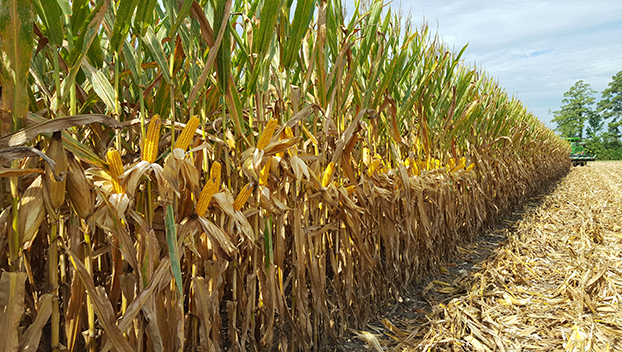Beaufort County ranks top in the state for soybean and corn production
Published 4:43 pm Thursday, January 28, 2021

- TOP CROP: Beaufort County is the top producer of corn in North Carolina with over 5.4 million bundles harvested in 2019. (Photo submitted by Rod Gurganus)
|
Getting your Trinity Audio player ready...
|
Beaufort County is the number one producer of soybeans and corn for grain in the state of North Carolina, according to a recently released agriculture review of 2019 from the North Carolina Annual Statistics Bulletin.
“We’re blessed to have a lot of acres that are devoted to corn and soybeans and that shows in these numbers and where the county ranks each year,” said Rod Gurganus, County Extension Director for the Beaufort County Cooperative Extension.
Over 5.4 million bushels of corn for grain were harvested in Beaufort County in 2019. This total far surpasses the next highest number of 4.1 million bushels of corn for grain harvested in Tyrell County. 2.5 million bushels of soybeans were harvested in 2019 throughout Beaufort County, marking the largest production number from a county in North Carolina.
Other crops produced in Beaufort County during 2019 include over 26,000 bales of cotton totalling over 12.6 million pounds, and 280,000 bushels of wheat. The county ranked 13 and 12 in the state, respectively.
“Our ranks in livestock numbers are at the opposite end of the spectrum. We are a crop county primarily. We do have some swine production here,” said Gurganus. “We’re in the top quarter roughly, but we used to have more and things change over time. That production has just shifted to the south and west.”
Beaufort County ranked 36 in the state for total cash receipts with a total of over 108 million dollars from livestock, dairy, poultry, and crop production as well as government payments. Crops only received over 62 million dollars in cash receipts and made the county 15 in the state.
“Because we don’t have a lot of animals, that brings our overall total ranking down. We also don’t have a lot of high value crops outside of tobacco,” said Gurganus.
In the most recent Census of Agriculture from 2017, Beaufort County produced just over 6 million dollars worth of tobacco. This number is down from the 7.4 million dollars in sales from the 2012 census of agriculture.
“Our tobacco acreage has shrunk down to a very small number, that’s for sure. We never were huge in tobacco but tobacco across the state was a big crop for years and that production has shifted some and it’s not what it once was for us,” said Gurganus.





